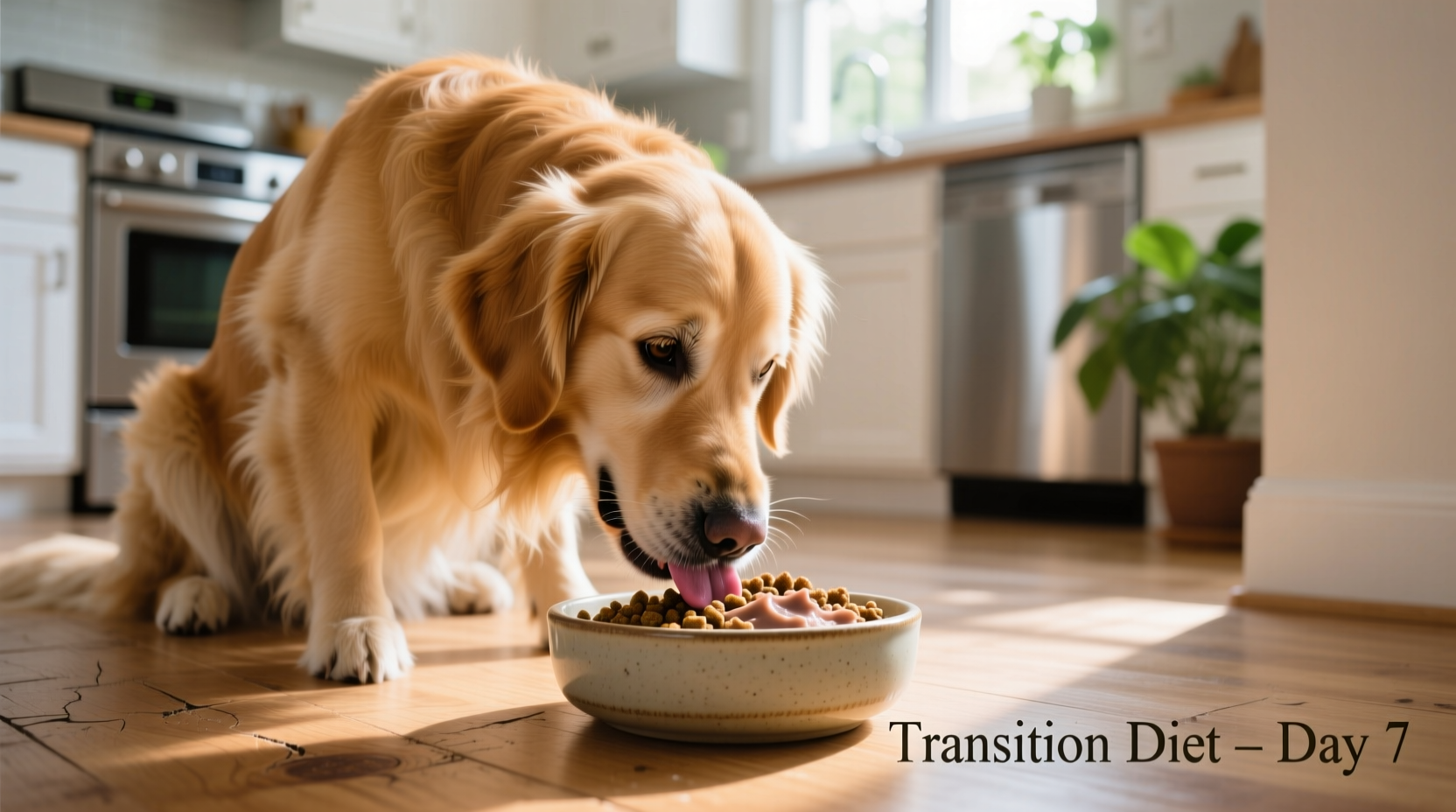Transition your dog to new food safely over 7-10 days by gradually mixing increasing amounts of new food with decreasing amounts of old food. This prevents digestive upset, maintains gut health, and ensures your dog accepts the new diet without stress.
Changing your dog's food requires careful planning to avoid gastrointestinal distress. An abrupt switch can cause vomiting, diarrhea, or loss of appetite—issues that send thousands of pet owners to veterinarians each year. The 7-10 day transition method recommended by veterinary nutritionists allows your dog's digestive system to adapt while maintaining nutritional balance.
Why Proper Food Transition Matters for Canine Health
Dogs have sensitive digestive systems that rely on stable gut microbiomes. Research from the Veterinary Information Network shows sudden dietary changes disrupt beneficial bacteria, leading to:
- Acute gastrointestinal inflammation in 68% of dogs
- Reduced nutrient absorption during digestive upset
- Potential food aversion if transition causes discomfort
Proper transition isn't just about avoiding messes—it's crucial for maintaining your dog's long-term digestive health and ensuring they receive complete nutrition from their new food.
Your Step-by-Step Food Transition Timeline
Follow this scientifically-backed schedule developed with input from board-certified veterinary nutritionists. The gradual transition method works for all life stages—from puppies to senior dogs.
| Transition Day | Old Food Percentage | New Food Percentage | Key Monitoring Points |
|---|---|---|---|
| Days 1-2 | 75% | 25% | Check stool consistency after first meal |
| Days 3-4 | 50% | 50% | Monitor energy levels and appetite |
| Days 5-6 | 25% | 75% | Watch for gas or bloating |
| Days 7-10 | 0% | 100% | Confirm normal digestion for 48 hours |
This standard dog food transition schedule works for most healthy adult dogs. Adjustments may be needed for sensitive systems—more on that below.
Executing the Perfect Food Switch: Pro Techniques
Measurement Matters: Getting the Mix Right
Use precise measurements—not eyeballing—to maintain proper ratios. For a dog eating 2 cups daily:
- Days 1-2: 1½ cups old food + ½ cup new food
- Days 3-4: 1 cup old food + 1 cup new food
- Days 5-6: ½ cup old food + 1½ cups new food
- Days 7-10: 2 cups new food
Temperature Tricks for Picky Eaters
If your dog refuses the mixed meal:
- Gently warm the food to enhance aroma (never hot)
- Add 1-2 tablespoons of low-sodium broth
- Mix in a teaspoon of plain pumpkin puree

Special Transition Scenarios Requiring Adjustments
Not all dogs follow the standard how to switch dog food schedule. These situations need modified approaches:
For Dogs with Sensitive Stomachs
Extend the transition to 14 days using smaller increments. Start with just 10% new food for the first 3 days before progressing to 25%. The American College of Veterinary Nutrition reports sensitive dogs need slower microbiome adaptation.
Puppy Food Transitions
Puppies require more gradual changes due to developing digestive systems. Maintain each ratio for 3 days instead of 2, making the transition last 12 days. Never skip transitional stages—their immature systems can't handle rapid changes.
Medical Diet Transitions
When switching to prescription diets for health conditions, follow your veterinarian's specific protocol. Some therapeutic diets require:
- Shorter transitions (5 days) for kidney support formulas
- Extended transitions (14+ days) for pancreatic enzyme diets
- Strict adherence to prescribed ratios
Warning Signs That Require Pausing Transition
Monitor these critical indicators during your dog food change process. Contact your veterinarian immediately if you notice:
- Diarrhea lasting more than 12 hours
- Vomiting more than twice in 24 hours
- Complete refusal to eat for 24+ hours
- Blood in stool or vomit
- Excessive lethargy or pain signs
If these occur, revert to 100% old food until symptoms resolve, then restart transition at a slower pace. Never push through severe symptoms—the American Veterinary Medical Association emphasizes that digestive distress can escalate quickly in dogs.
Post-Transition Care for Ongoing Digestive Health
After successful transition, maintain digestive wellness with these practices:
- Consistent feeding schedule (same times daily)
- Plenty of fresh water access
- Probiotic supplements if recommended by vet
- Avoid random treats that disrupt digestive balance
Monitor stool quality using the Veterinary Information Network's 7-point scale where 4 is ideal. Consistent quality 4-5 stools indicate proper digestion.
Frequently Asked Questions About Dog Food Transition
Can I speed up the transition process?
While some sources suggest 5-day transitions, veterinary nutritionists strongly advise against rushing. The 7-10 day standard allows proper gut bacteria adaptation. Exceptions exist for medical emergencies under veterinary supervision.
What if my dog refuses the mixed food?
Try warming the meal slightly, adding broth, or hand-feeding small portions. Never force-feed. If refusal persists beyond 24 hours, revert to previous ratio for another day before retrying.
Should I change treats during transition?
Maintain current treats during transition to avoid additional digestive variables. Introduce new treats only after successful transition to new food.
How do I transition between different food types?
Wet to dry or kibble to raw transitions require extended 14-day schedules. For wet-to-dry changes, start by mixing wet food with soaked kibble before progressing to dry.











 浙公网安备
33010002000092号
浙公网安备
33010002000092号 浙B2-20120091-4
浙B2-20120091-4